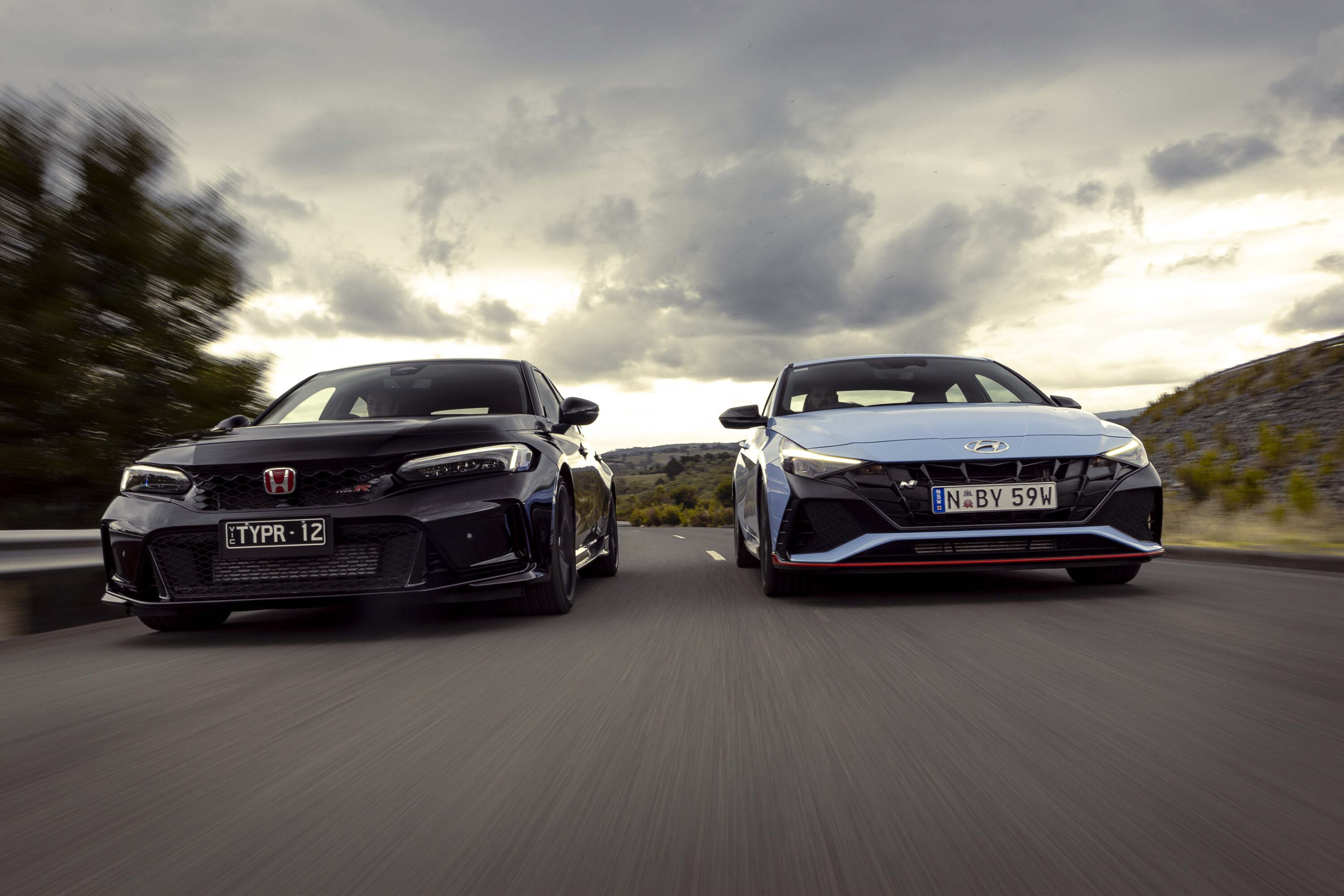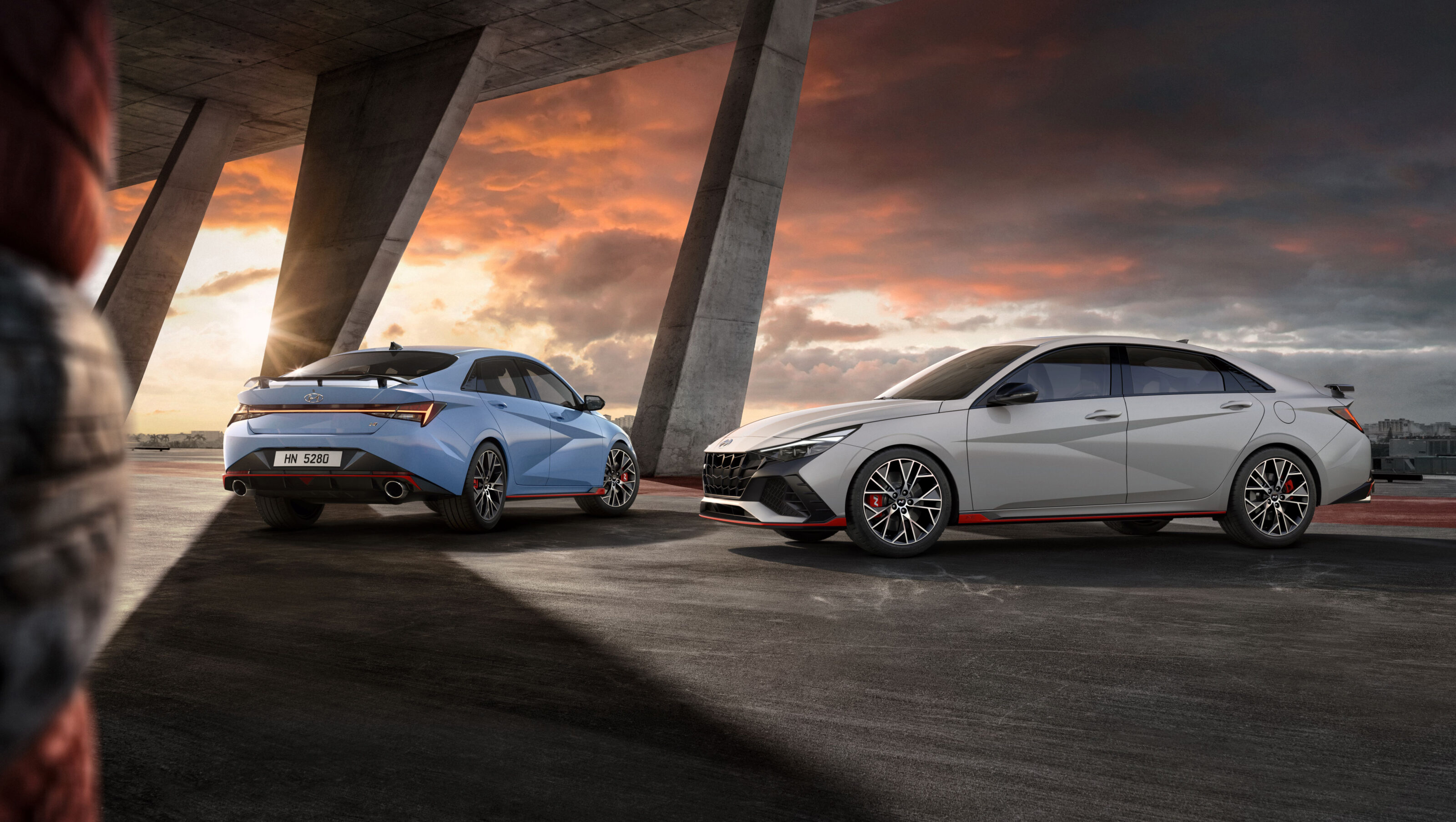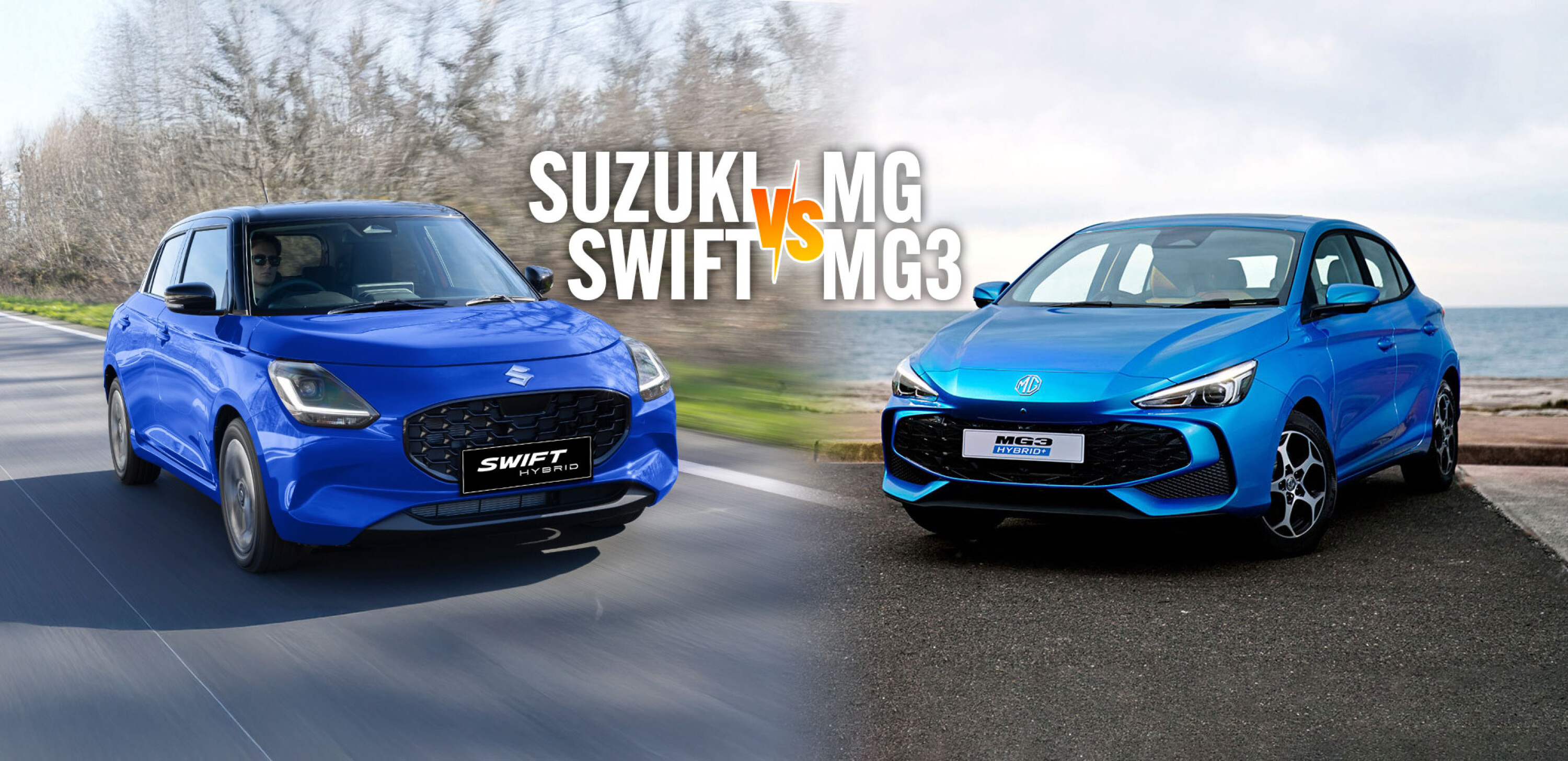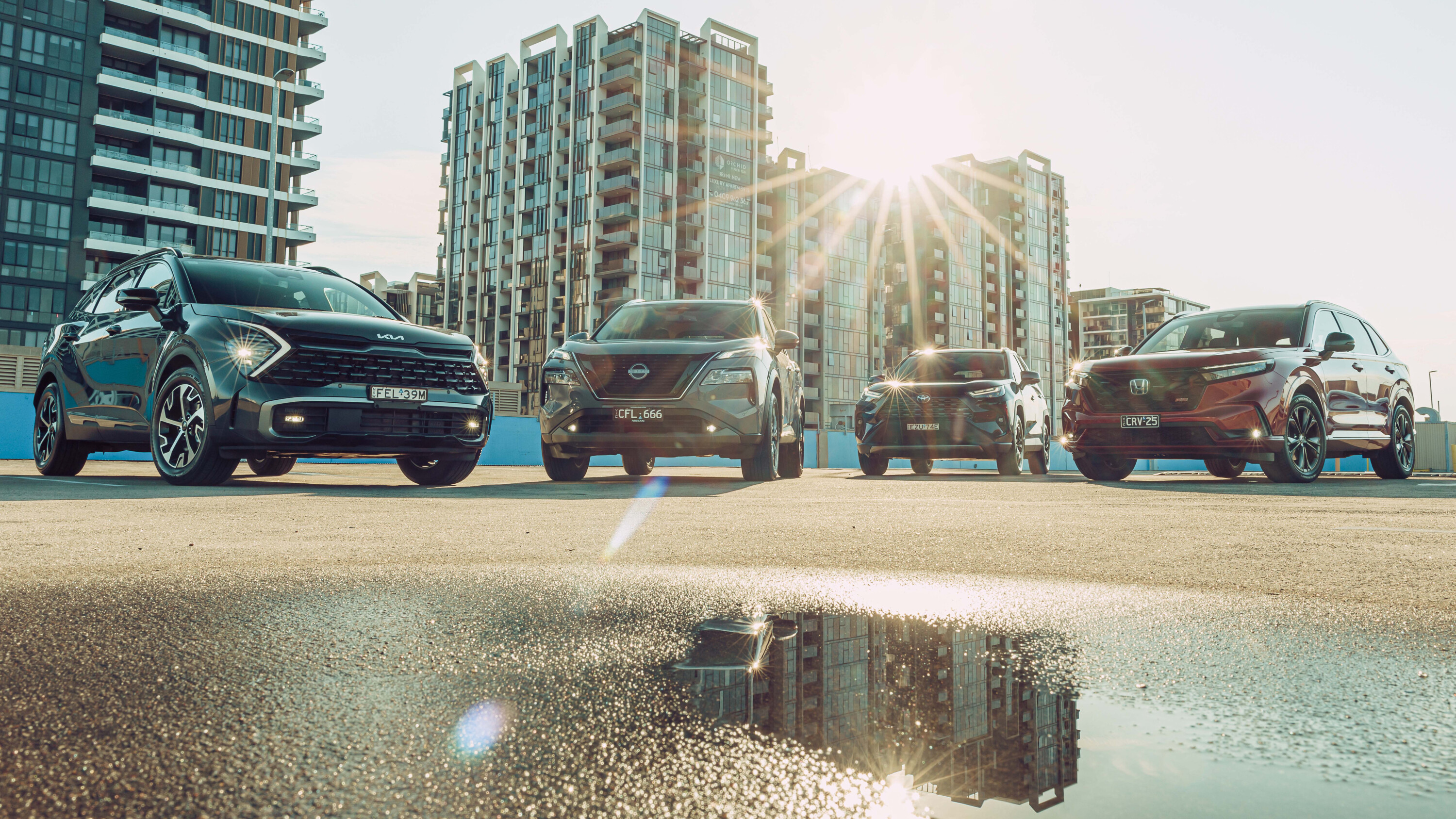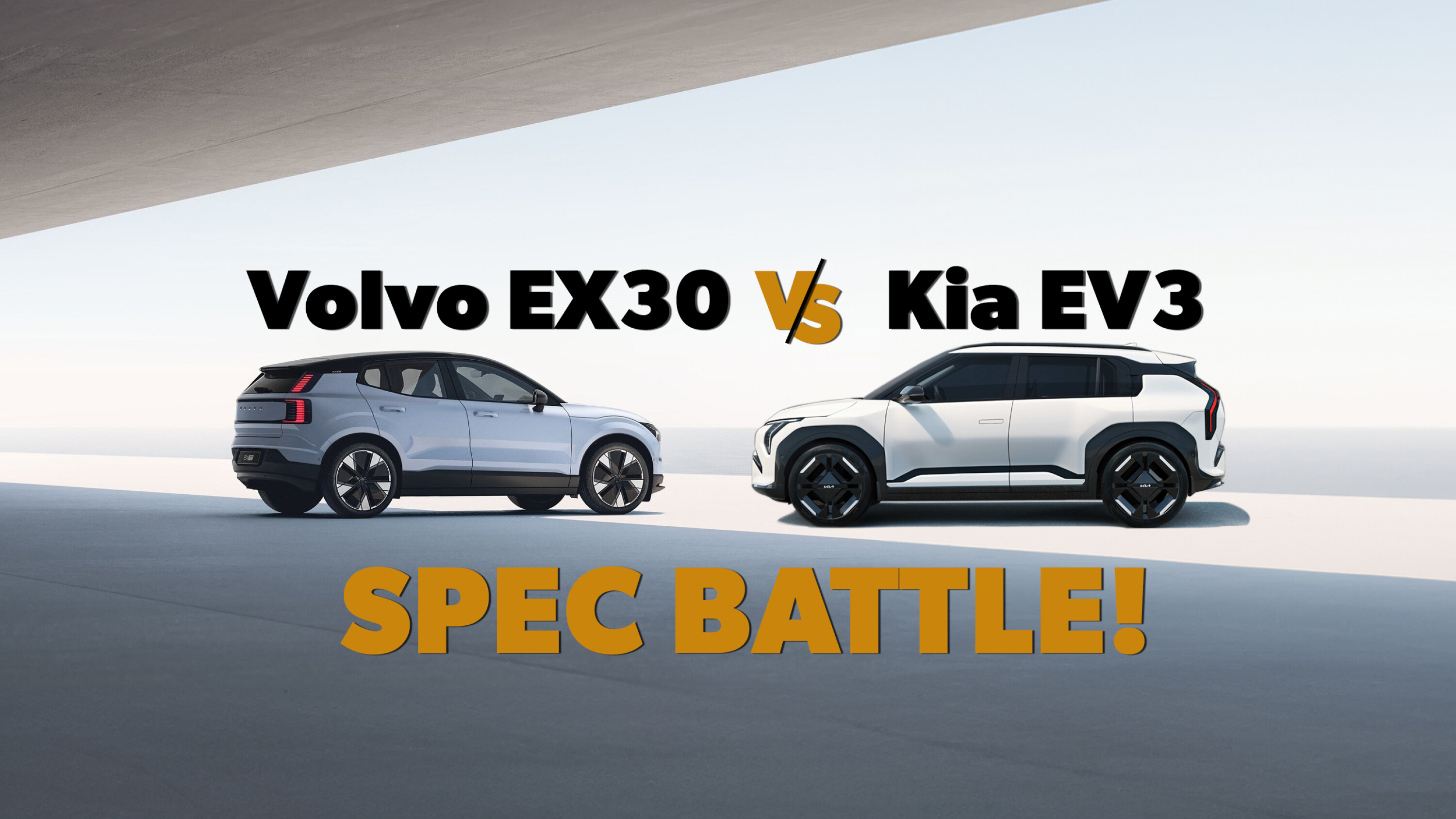Things we like
- i30 N: Fun factor, equipment list, track warranty, interior space
- CIVIC TYPE R: Amazing grip and traction, gutsy powerplant
Not so much
- i30 N: Hard interior plastics, power deployment in the wet
- CIVIC TYPE R: No spare tyre, sparse availability, price above a Golf R
DIFFERENTIAL EQUATIONS
The best hot hatch in the world right now is built by Honda, and you’re looking at it right here. That much is not really up for debate.
The latest FL5-generation Civic Type R delivers a level of focus and ferocity that you’ll find nowhere else in its class.
Quite what that class is though remains a debating point. The Type R begins to blur the boundaries between the usual front-drive cohort and the level of sophistication that you find in all-wheel-drive hyper-hatches like the Audi RS3 and the Mercedes-AMG A45 S.
Or, to a lesser extent, the Volkswagen Golf R and the Toyota GR Corolla. We’ll put it up against those in due course, but the question we want answered today is exactly how far removed is it from a vehicle at the top of the front-driver crop?
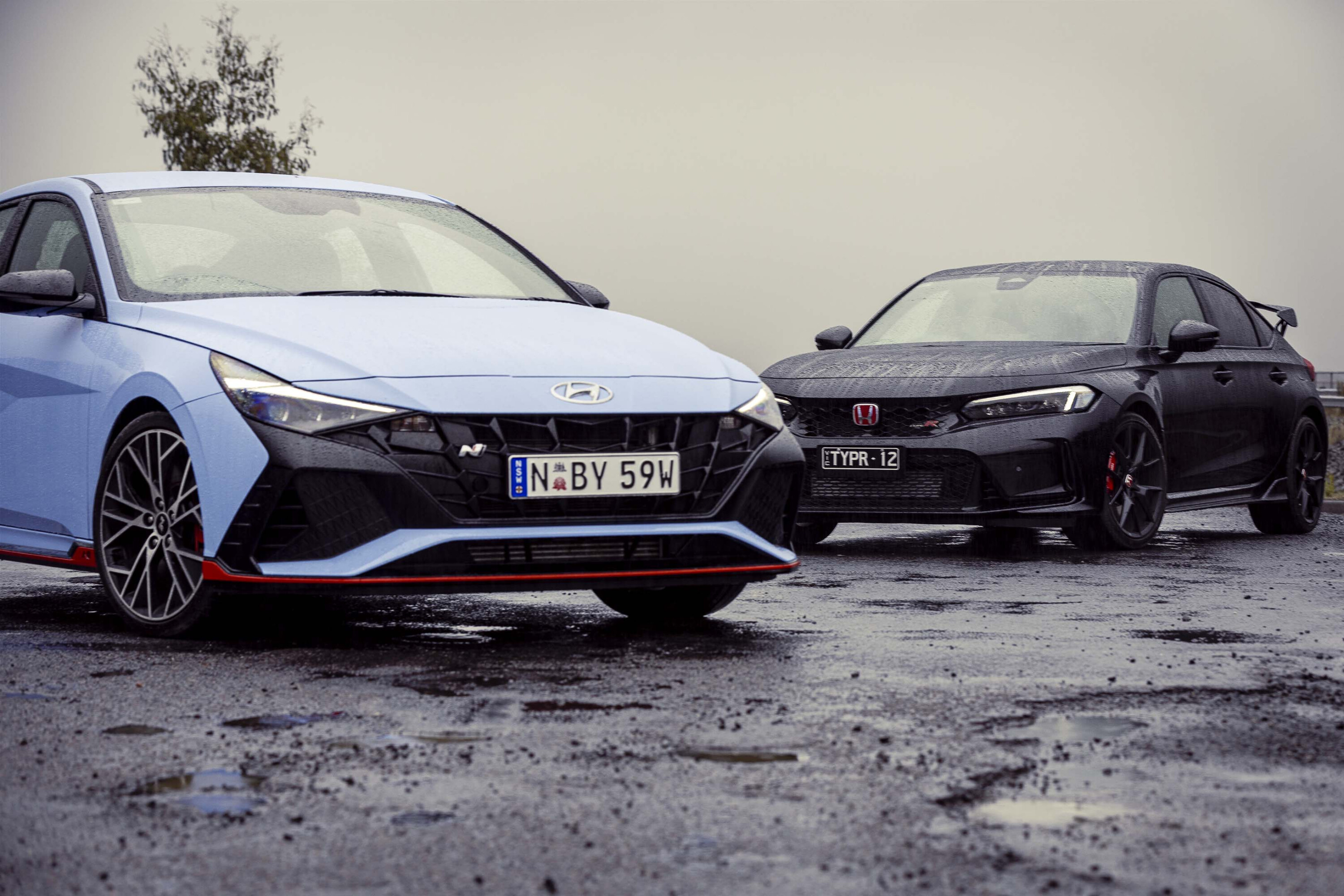
Step forward the Hyundai i30 Sedan N, a front-driver – which, if you look at the bald figures, is quicker than the Civic to 100km/h.
It’s better equipped. It brings with it a warranty that covers race track use. And it’s over $23,000 cheaper.
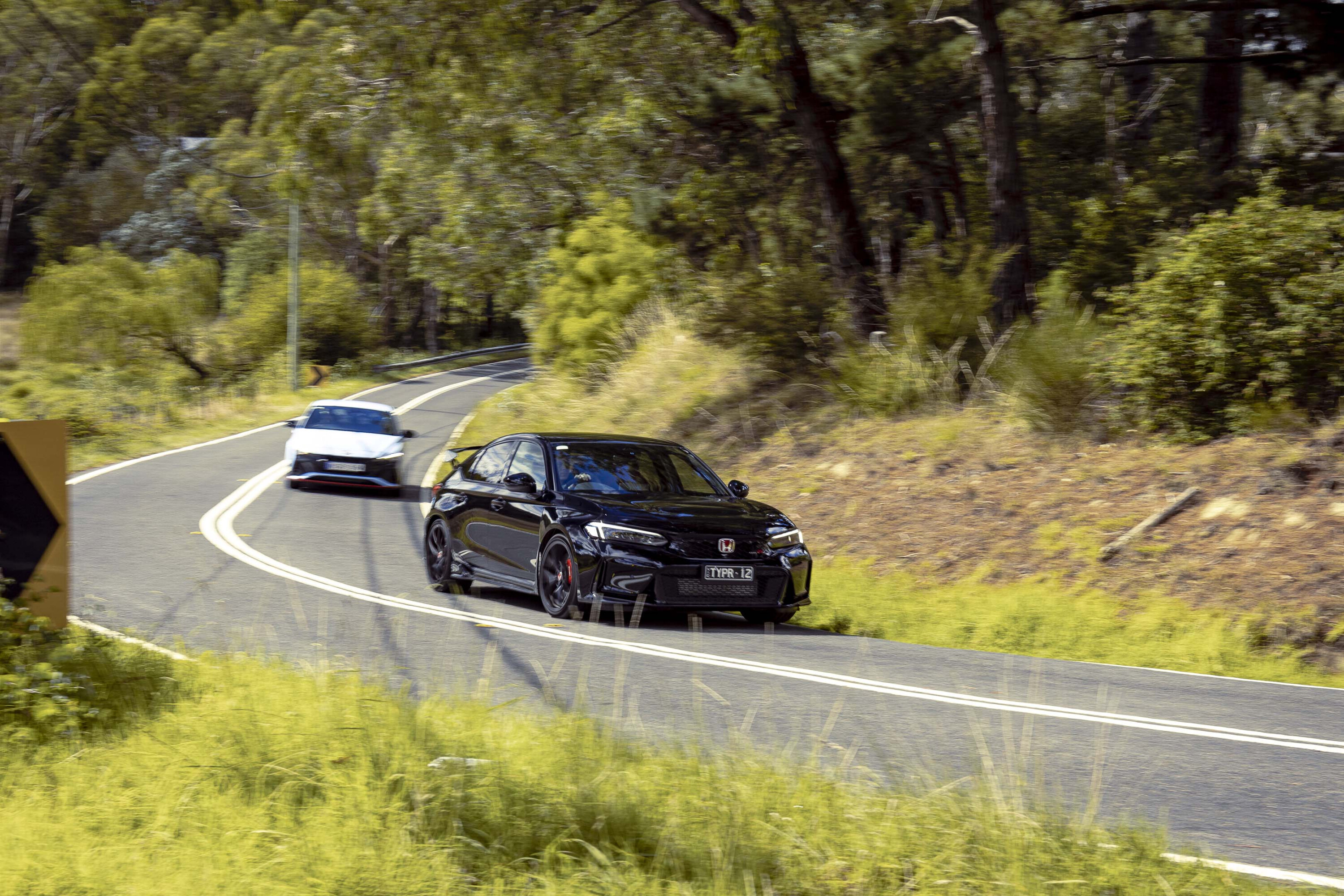
In other words, the Civic may well be the best, but is it the best buy? That’s what we’re here to find out.
‘Here’ is a test loop that’s a local favourite for those in the Wheels office. It’s a sneaky 30-minute jaunt away from the desk and throws in a mix of corners, surfaces and elevation changes that ought to highlight where the Civic puts clean air between itself and the shark-like nose of the N-car.
Compared to the easily resolved sedan silhouette of the Hyundai, the Civic takes a little longer to grow accustomed to.
In profile, the wheelbase looks stretched to each corner and is mated to a bluff front and a tapering rear such that it almost looks as if the Type R would be more aerodynamic in reverse.
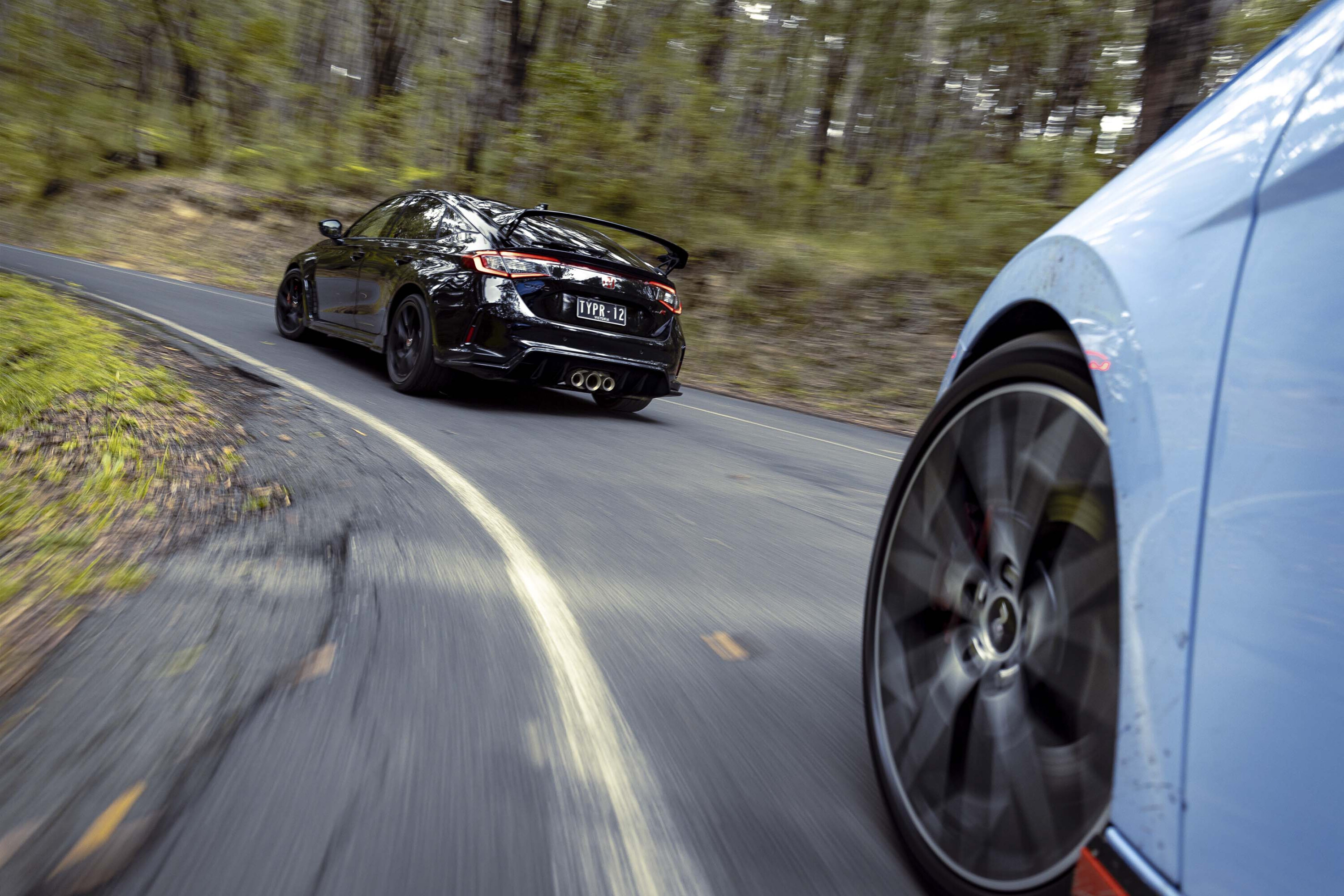
And before you start penning letters about Austin Allegros, that one’s not an urban myth. Ex-BL designer Steven Harper confirmed the Austin was more slippery in reverse, as indeed are many cars with a grille at the front.
Digression over, let’s look at quite what each car brings to this head-to-head. The key stats to consider for the Honda are a power figure of 235kW, torque of 420Nm and a kerb weight of 1435kg which translate to a power-to-weight figure of 163.8kW/tonne.
The Hyundai counters with a more modest 206kW and 392Nm that hauls 1480kg up the road for a 139.2kW/tonne PWR figure. So the Honda is 17.7 per cent better on PWR. That’s significant.
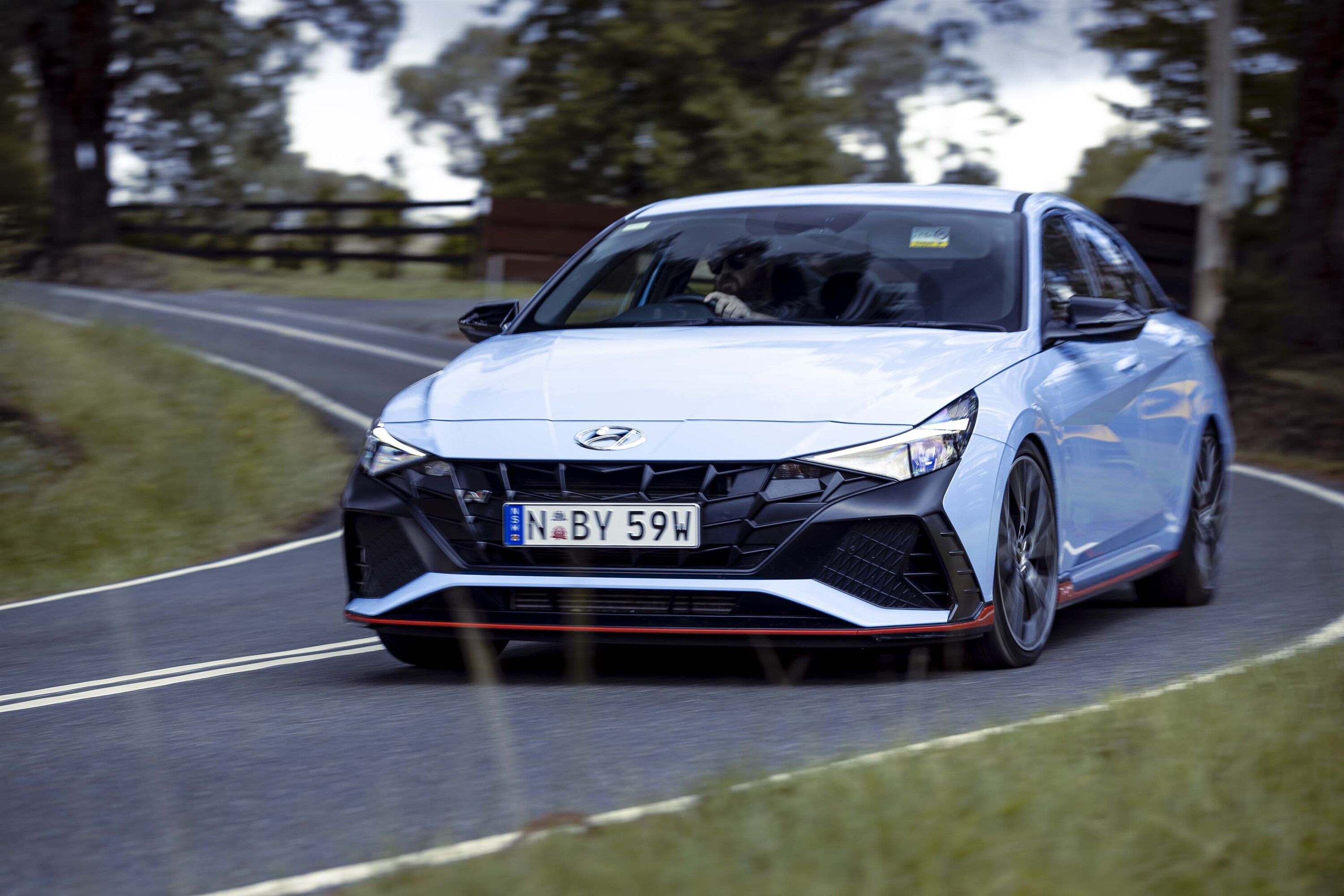
Hyundai’s leveller is its eight-speed dual-clutch transmission, which whips through gears far quicker than the tactile six-speed manual fitted to the Civic. That’s why the Honda will get to 100km/h in 5.4 seconds, just shaded by the Hyundai’s 5.3-second sprint.
Then you try that in the real world and realise that the Honda’s nose seems glued to the ground where the Hyundai feels as if somebody’s filled the engine bay with helium.
We’ve made note before about the i30 Sedan N’s propensity to wheelspin and axle tramp off the line, a trait exacerbated if it’s at all wet. And so it proves today. The steering is lighter and jumpier in your hands, requiring constant small corrections as the car torque steers, attempting to find traction.
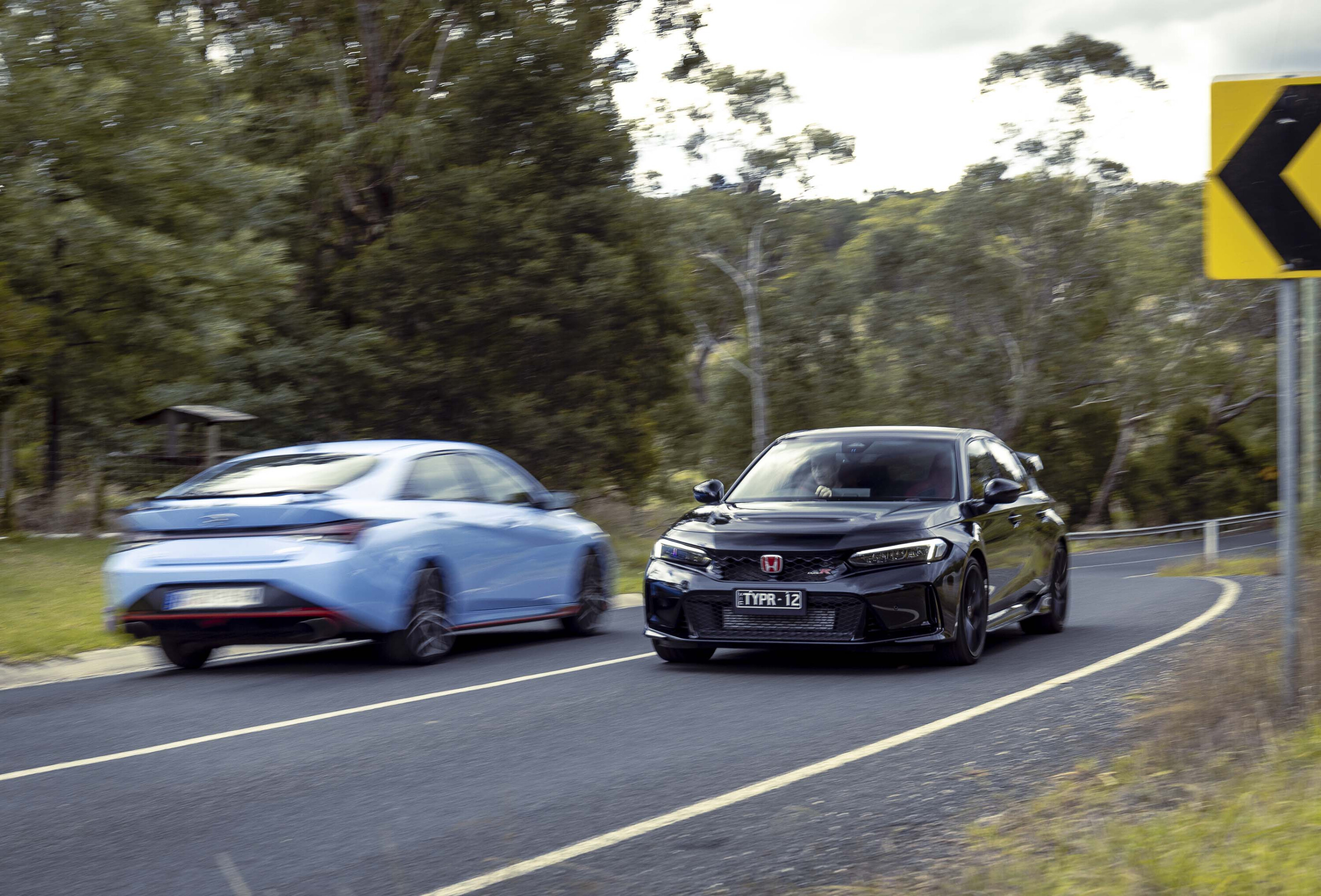
That’s not to say that the Honda is entirely free of such vices. It’s just that you really need to provoke the Type R at the top of its rev range in a low gear to get its composure to crack.
If there’s a road sure to cause some chassis consternation, we’ve found it. The lumps, bumps, blind crests and forested hairpins of Officer Road are 4.4km of condensed challenge. This was one of Holden’s old vehicle evaluation roads, cars schlepping up from the Lang Lang proving ground to tackle this snaking pitch of gnarled and patched bitumen.
Both of these vehicles have front ends that support their two-litre turbocharged transverse fours on MacPherson struts with adaptive dampers. Both have electrically-assisted steering geared at 2.2 turns lock to lock. Both ride on Michelin Pilot Sport 4S rubber measuring 265/30 ZR19 on the Civic and 245/35 ZR19 on the i30. The basic ingredients are nigh-on identical but the recipe has clearly been interpreted differently.
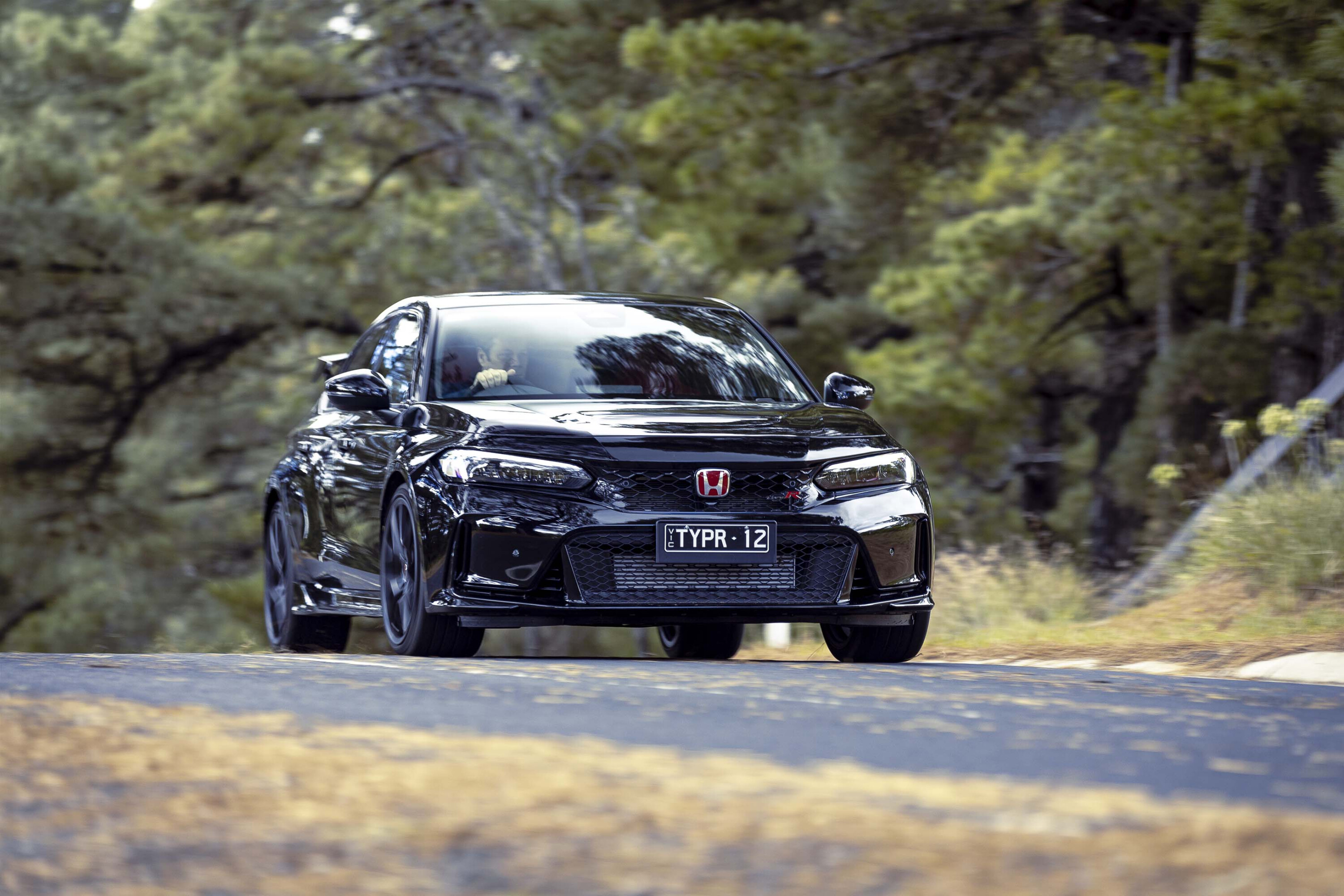
Pull on the Civic’s Alcantara-trimmed steering wheel and it feels like a flexed bicep muscle. It’s taut, sinewy. The Hyundai’s feels benign and well-oiled. In fact, the Honda’s EPAS is probably the closest in feel to a traditional hydraulic system I’ve yet encountered. Maybe even better than that of a Porsche 911 in that regard.
Hydraulic holdouts like McLaren need to realise that an inflection point has come. It’s time to move on. It’s helped by new bearings in the column and beefier tie-rod ends. A front anti-roll bar that’s 60 per cent stiffer than its predecessor reinforces that impression of a flat, implacable front end.
Tip the Type R into a tightish corner and it turns in crisply, instantly keying into the apex. The last Type R ran on 20-inch wheels and you feel that reduction in both unsprung weight and gyroscopic effect in this nimbler successor. You expect that. What you don’t expect is how hard and fast you can then apply a gargantuan bootful of throttle. It takes quite some time to adjust to this aspect of the Civic’s dynamics.
Everything that you’ve ever learned about powerful front-wheel-drive hatches and where they’ll begin to understeer requires an immediate recalibration.

The helical limited-slip differential doesn’t have the sort of grabby lock-up that uncouthly drags the front end to the apex. Instead, it doggedly holds a line despite the sort of provocation that would normally punch a hole in the adjacent scenery.
It can carry huge mid-corner speeds and the new Individual mode allows you to wick the engine and steering to their most aggressive settings while retaining a measure of suspension compliance, which is key on a road like this.
The Civic’s gearshift and pedal weighting is beautifully calibrated, with possibly the best rev-matching system I’ve ever experienced. I’m not sure if the shift action is quite such a delight as that of the old EP3 Type R, as the current car has the tiniest degree more grit in the action but it’s very good indeed.
Metal gear knobs aren’t a great idea in Australia though. The Hyundai’s eight-speed DCT is hard to fault, blatting through its ratios with speed and precision.
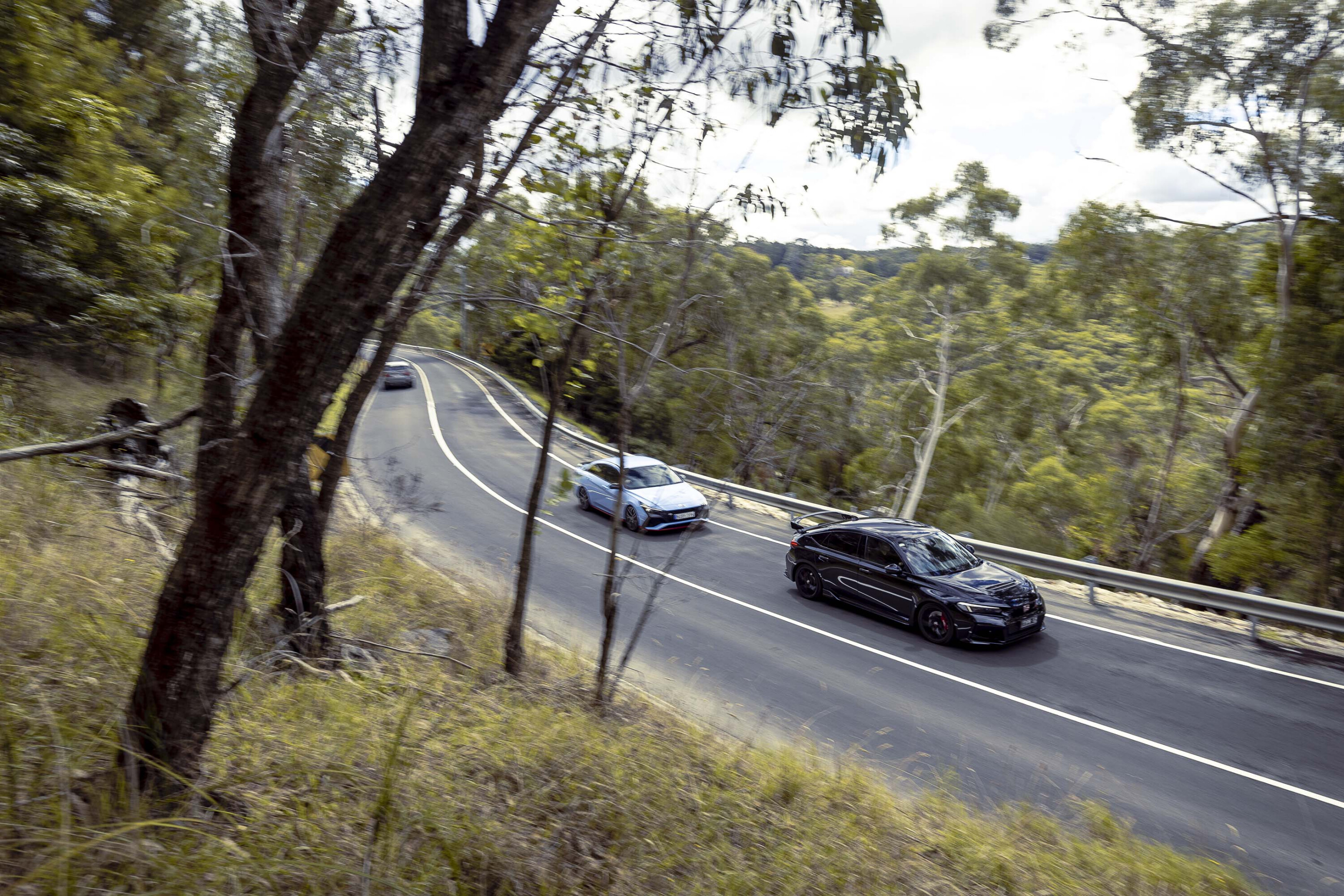
Some have groused that the latest Civic Type R is too firm. That’s utter tripe. For the handling payback delivered, the ride quality is far from unreasonable.
It’s not as generous in its bandwidth as the Hyundai, but it’s far from choppy, even when set into +R mode. Front-end support is excellent on bumpy roads, certainly better than the i30 Sedan N where sharp ruts and shallow potholes will see you get regular use from the bump stops.
In the Hyundai’s defence, this car has seen over 18,000km of spirited use, whereas the Honda is box-fresh.
But it is noisy, especially on poor surfaces where the tyres drum through those rigid NVH pathways into the passenger cell. The i30’s no wafter either, with the engine and exhaust noisier in both its mildest and angriest modes. With the N setting engaged, the i30 barks, crackles and pops.
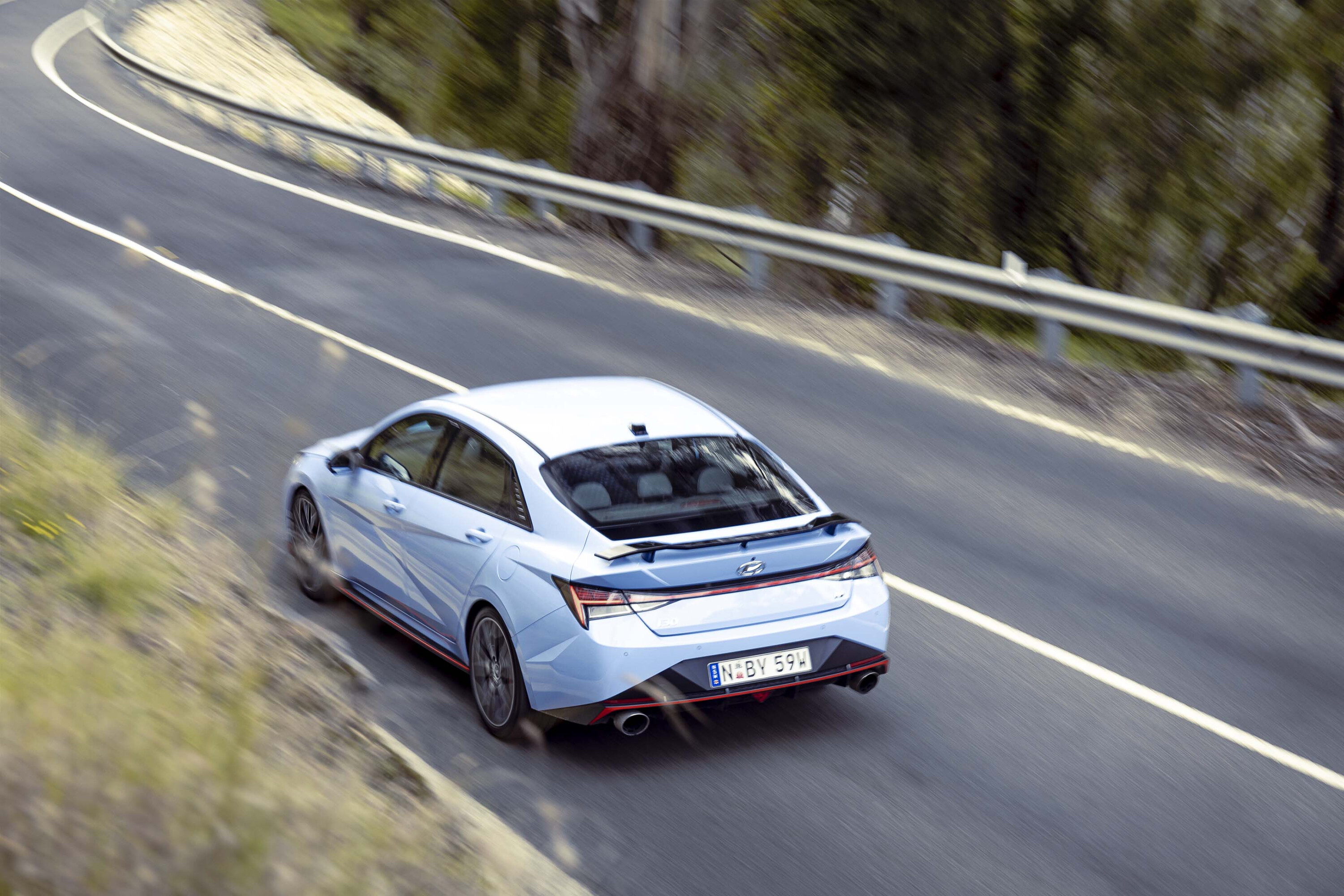
The stability control is also very lax. An indicator on the dash lets you know that you’re in ESC Sport, but a big lift when committed to a corner will send the Korean very sideways indeed.
By contrast, the Civic is far more prescriptive, simply tucking the nose neatly at fast road speeds.
Both vehicles are reasonably large. The Honda, for instance, offers a bigger road footprint than a BMW E39 M5. As a result, they both require careful placement on narrow roads but accommodation inside both is generous, even in the rear seats.
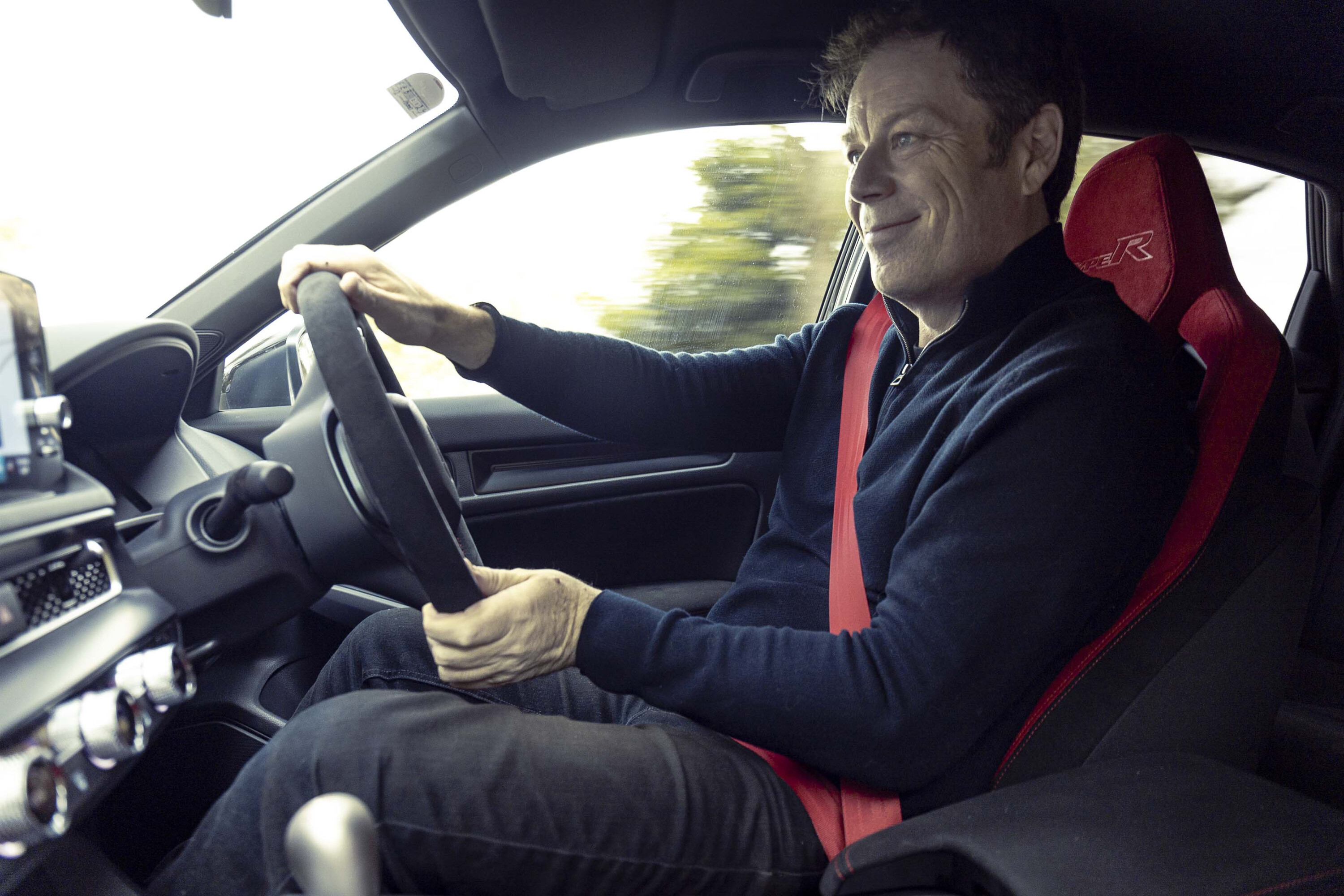
Special mention must go to the Honda’s beautiful bucket front seats which are not only supportive but comfortable too. The Hyundai’s front chairs are a little wider and flatter but, unlike the Honda’s, come with electric adjustment on the driver’s side and heating and ventilation for both driver and passenger. Steering wheel heating too.
Hyundai also supplies a space-saver spare tyre under the boot floor, whereas the Civic relies on a can of sealant in a cubby to the left of the luggage bay. The i30 N relies on a wired smartphone connection for Android Auto and Apple CarPlay. The Civic has wireless CarPlay but to unlock wireless Android you’ll need to go a long way subterranean in the infotainment.
With a cable plugged into it, your phone won’t sit in the Honda’s wireless charger. Instead, it’ll flop around with its cable getting in the way of the gearshift.
Interior quality is another area where the Honda differentiates itself from the Hyundai.

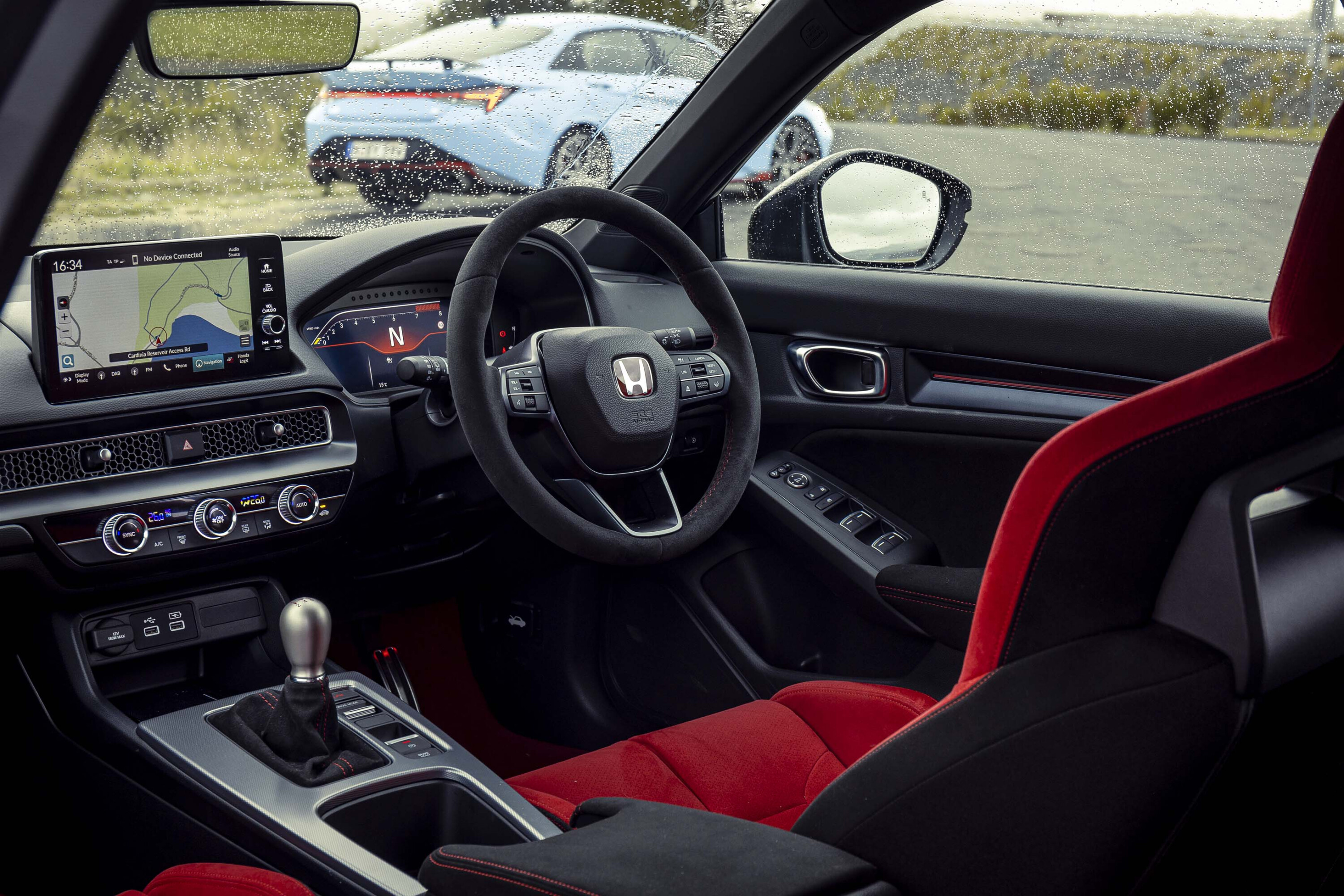
Brace your left leg against the centre stack when tackling a sharp right and the i30 N is all creaks and rattles. By contrast, the Civic’s spine feels adamantine, Porsche-like. That’s apt.
With prior generations of the Type R, we’d noted that this is what a Porsche hot hatch would feel like. This FL5 reinforces that impression still further. It’s the consideration of what a driver needs, the focus on that and then the finessing of all the other small details to contribute to that feeling of quiet confidence and considered cohesion. It’s a masterstroke.
Hyundai isn’t there yet with the i30 Sedan N, but such is the N division’s trajectory that its day will surely come. Drive the two cars and it does feel like a $23K gulf between them. Maybe more.
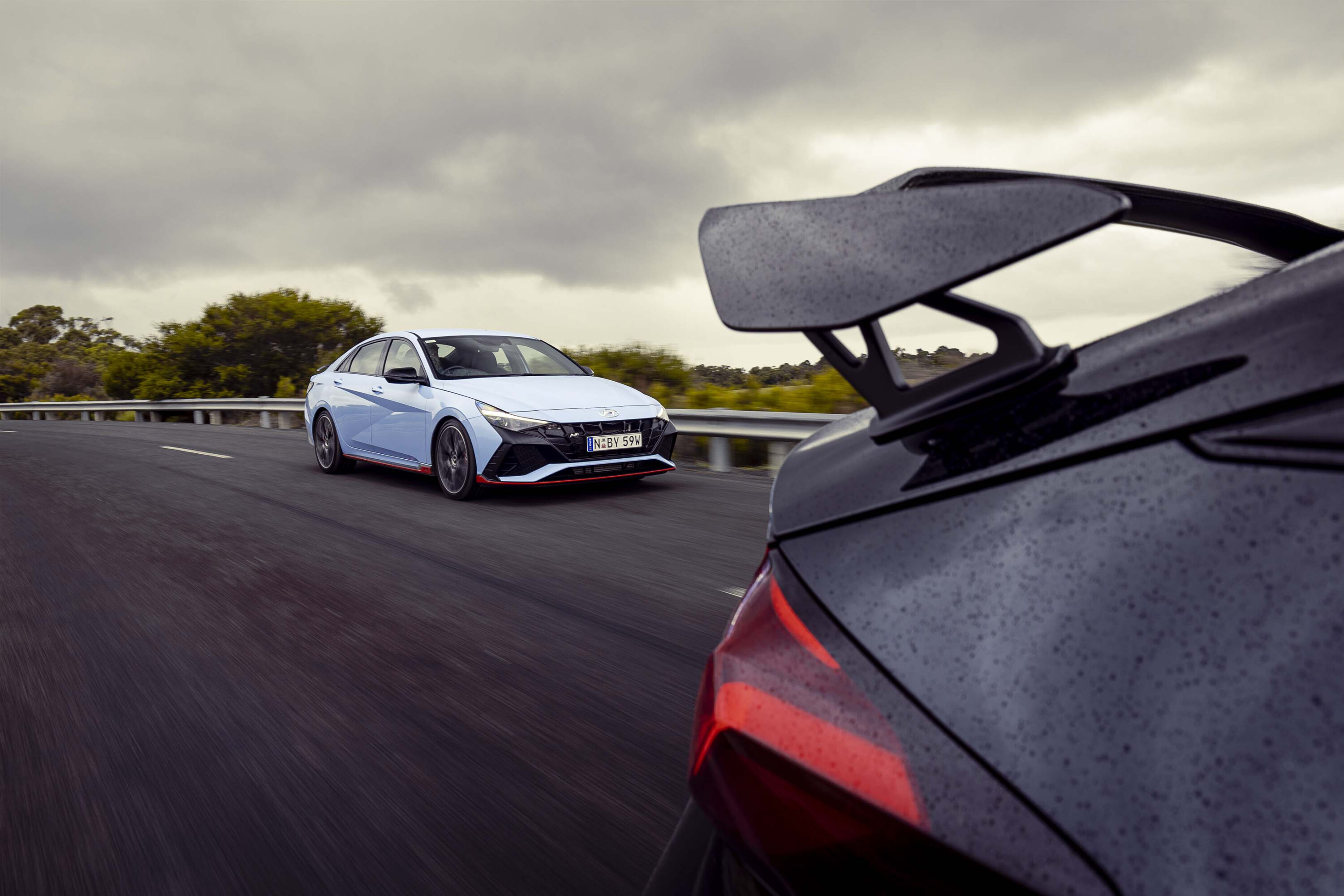
On give-and-take roads, the Hyundai was probably as much fun to drive as the Civic, and it may be easier to live with.
We expected it to get roughed up here but it emerged from this encounter with its pride intact.
If you’ve got $50K and are looking for a driver’s car with genuine versatility, it still stands up admirably.
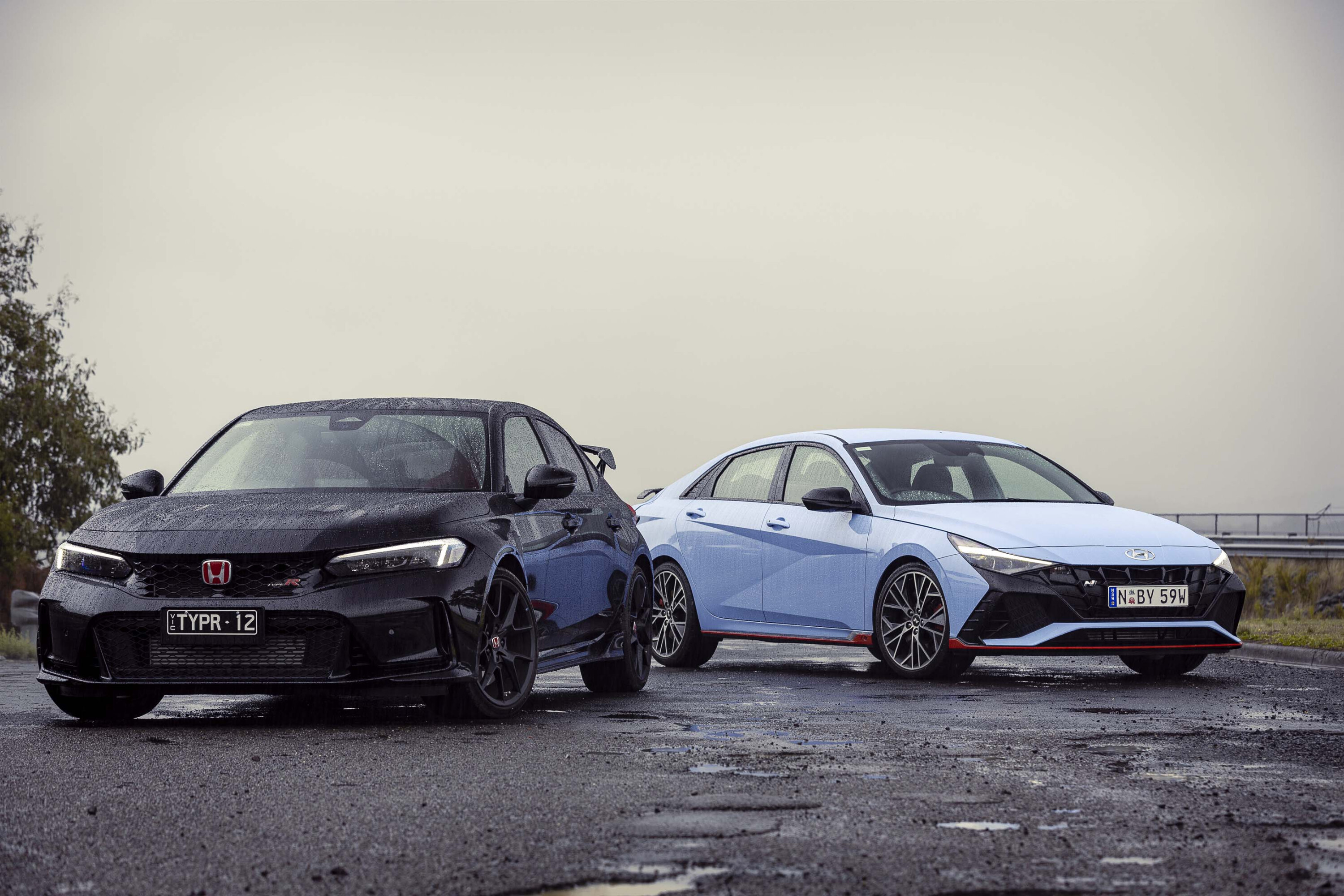
But N is not the new R. Not yet, anyway.
The FL5 Honda Civic Type R feels built without compromise to be the finest front-drive hot hatch of all time.
Yes, it’s a lot of money, but to drive the Civic Type R is to fall in love with the depth of the engineering behind it, to enjoy the benefits of a performance legacy that stretches back decades.
That’s hard to replicate and it bleeds into every aspect of the Type R experience. What your $72,600 is buying you is authenticity, and that is hard to put a price on.
| Specifications | ||
|---|---|---|
| Model | 2023 Honda Civic Type R | 2023 Hyundai i30 Sedan N |
| Engine | 2.0-litre 4cyl, dohc, 16v turbo-petrol | 2.0-litre 4cyl, dohc, 16v turbo-petrol |
| Max power | 235kW @ 6500rpm | 206kW @ 5500-6500rpm |
| Max torque | 420Nm @ 2500-4000rpm | 392Nm @ 2100-4700rpm |
| Transmission | 6-speed manual | 8-speed dual-clutch |
| L/W/H/W-B | 4606/1890/1407/2733mm | 4675/1825/1415/2720mm |
| Weight | 1430kg | 1445kg |
| 0-100km/h | 5.4s | 5.3s |
| Economy | 8.9L/100km (ADR combined) | 8.2L/100km (ADR combined) |
| Price | $72,600 drive-away | $49,000.00 + on-road costs |
| On sale | Now | Now |
Things we like
- i30 N: Fun factor, equipment list, track warranty, interior space
- CIVIC TYPE R: Amazing grip and traction, gutsy powerplant
Not so much
- i30 N: Hard interior plastics, power deployment in the wet
- CIVIC TYPE R: No spare tyre, sparse availability, price above a Golf R
We recommend
-
 News
News2023 Honda Civic Type R Australian pricing and timing confirmed
Honda Australia confirms drive-away pricing, and the expected local arrival, for its hotly anticipated 2023 Civic Type R
-
 News
News2022 Hyundai i30 Sedan N pricing and features for Australia
Hyundai N Division’s newest star athlete brings a booted sedan body to the high performance range
-
 News
News2025 New Car Calendar: All the new cars coming to Australia
Take a look at our list of what is expected to launch in Australia in 2025 – plus those we might not see locally just yet


